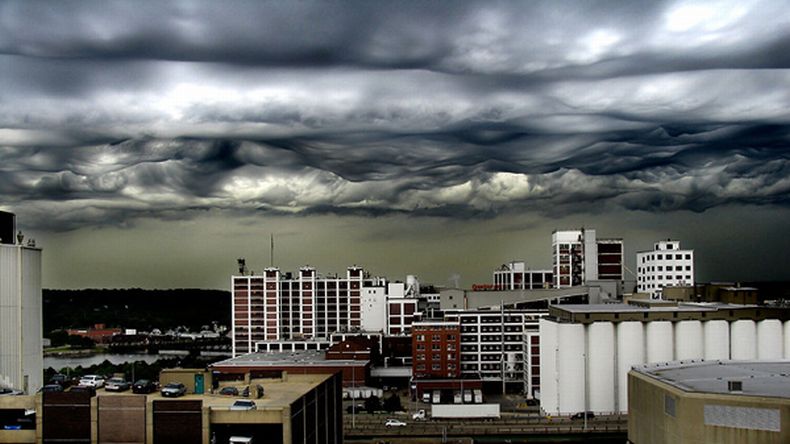|
|
Clouds Formation
|
Other varieties are determined by the arrangements of the cloud structures into particular patterns that are discernable by a surface based observer (cloud fields usually being visible only from a significant altitude above the formations). The variety undulatus (having a wavy undulating base) is common to all high, middle, and low genera except those with significant vertical extent. Another common variety, duplicatus (closely spaced layers of the same genus, one above the other) is found with all the same genera except cirrocumulus. The variety radiatus is associated with cloud rows of a particular genus that appear to converge at the horizon and is seen mostly with cirrus, altocumulus, altostratus, stratocumulus, and cumulus.
Intortus and vertebratus varieties occur only with the genus cirrus and are respectively filaments twisted into irregular shapes and those that are arranged in fishbone patterns. Probably the most uncommonly seen is the variety lacunosus caused by localized downdrafts that punch circular holes into high, middle, and/or low cloud layers of limited convection.
• Supplementary features
One group of supplementary features are not actual cloud formations but precipitation that falls when water droplets that make up visible clouds have grown too heavy to remain aloft. Virga is a feature seen with clouds producing precipitation that evaporates before reaching the ground, these being of the genera cirrocumulus, altocumulus, altostratus, nimbostratus, stratocumulus, cumulus, and cumulonimbus. When the precipitation reaches the ground without completely evaporating, it is designated as the feature praecipitatio. This normally occurs with altostratus opacus which can produce widespread but usually light precipitation, and the thicker low to middle genera. Of the latter, cumulus mediocris produces only isolated light showers, while nimbostratus of the same family D1 is capable of heavier more extensive precipitation. Of the family D2 clouds, cumulus congestus can produce showers of moderately heavy intensity, with cumulonimbus having the capacity to produce very heavy showers. Low stratus clouds usually produce only light precipitation, but this always occurs as the feature praecipitatio due to the fact this cloud genus lies too close to the ground to allow for the formation of virga. The heavier precipitating clouds, nimbostratus, towering cumulus (cumulus congestus), and cumulonimbus, also typically see the formation in precipitation of the pannus feature, low ragged clouds of the genera and species cumulus fractus and/or stratus fractus.
|
|









